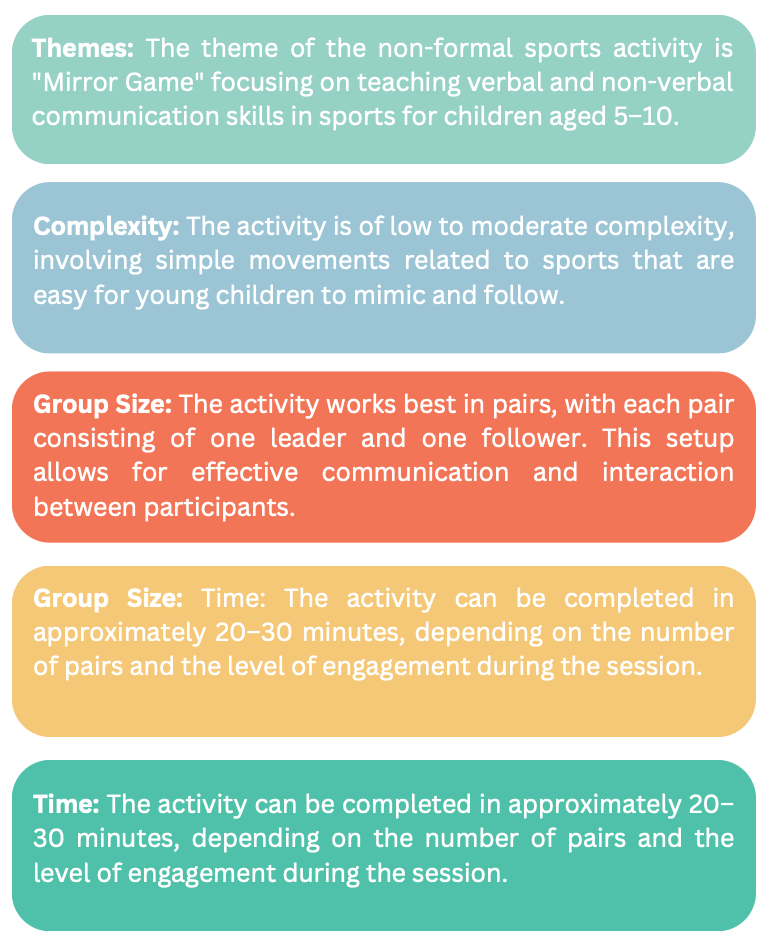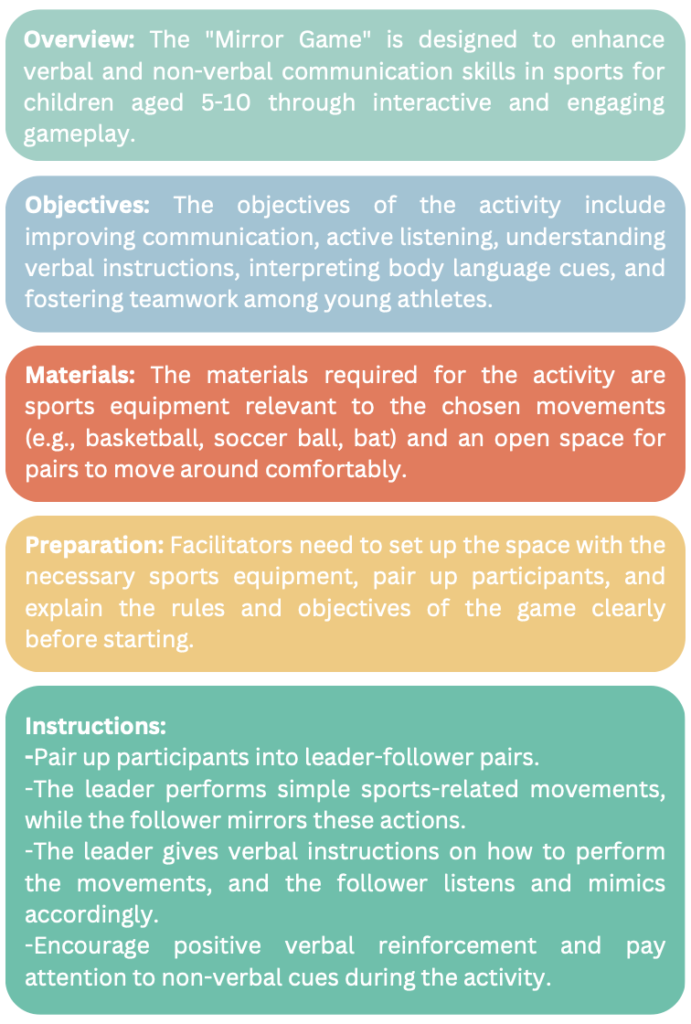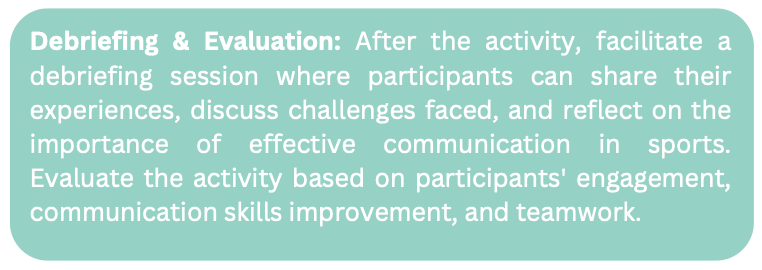DCD
Use of verbal and non-verbal communication to address DCD


Communication in sports, whether verbal or non- verbal, plays a pivotal role in optimizing performance, be it between kids in sports and coaches, among kids playing sports themselves, or even involving spectators who are active participants in the communication process. The significance of communication in sports has been increasingly recognized, with a growing emphasis on understanding body language as a key aspect of effective communication. Kids with DCD, who are already often experiencing the difficulties participating in sports, need a constant verbal and non-verbal support, through active communication with their coaches and co-players. This will empower them to keep trying and excelling in sports. Moreover, considering the challenges they have with performance, good understanding among co-players can help them to reach higher results in any game.
PRACTICE 1 - Verbal and non-verbal communication
Each item on the DCDQ is rated on a five-point Likert scale, ranging from “not at all like my child” to “extremely like my child.” The scores from all items are summed to give a total score. The cut-off scores vary by age group, with higher scores indicating better motor performance. If a child’s total score is below the threshold for their age group, it suggests they may have significant motor coordination difficulties and should be referred for further assessment. Motor skills encompass a broad spectrum of abilities related to movement and coordination, including both fine motor skills, which involve precise and coordinated movements of the hands and fingers, and gross motor skills, which involve larger movements of the body such as walking, running, jumping, and balancing.



Useful Links
Subscribe Now
Don’t miss our future updates! Get Subscribed Today!
©2024. dyspraxia.world
